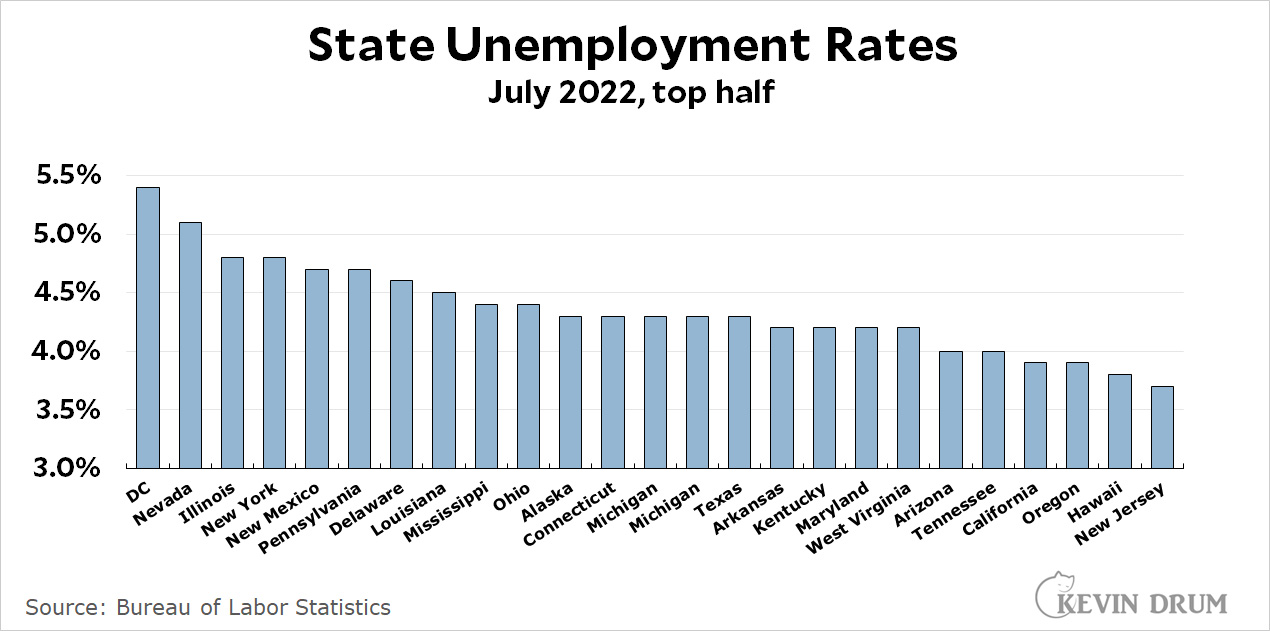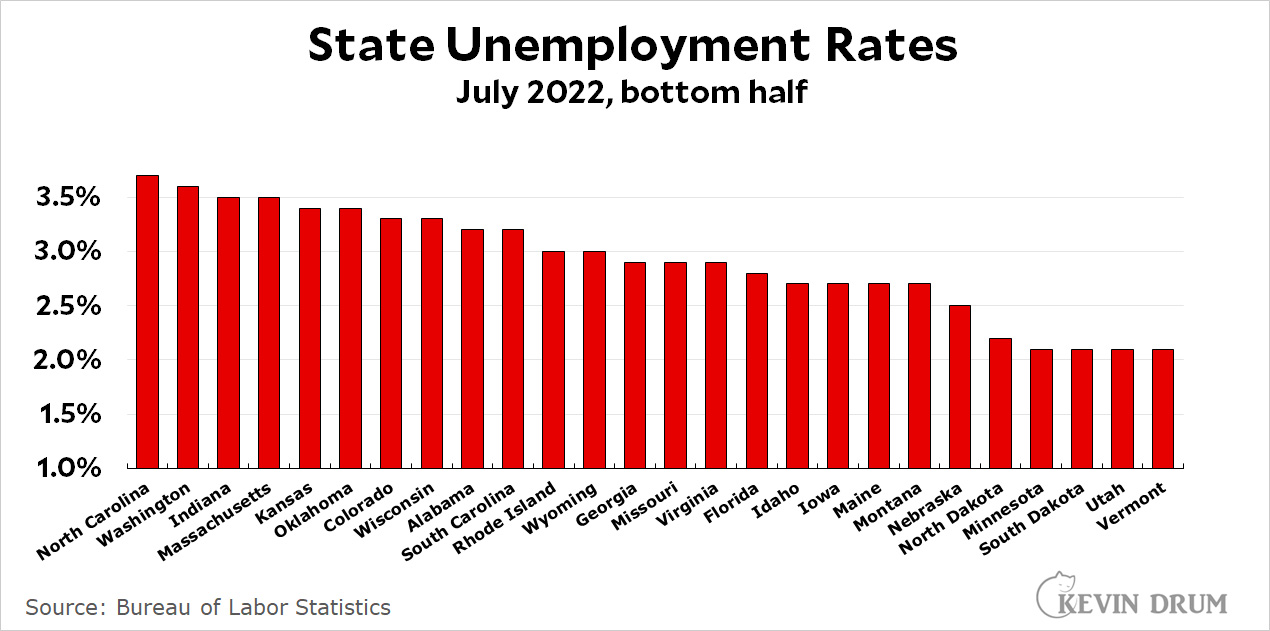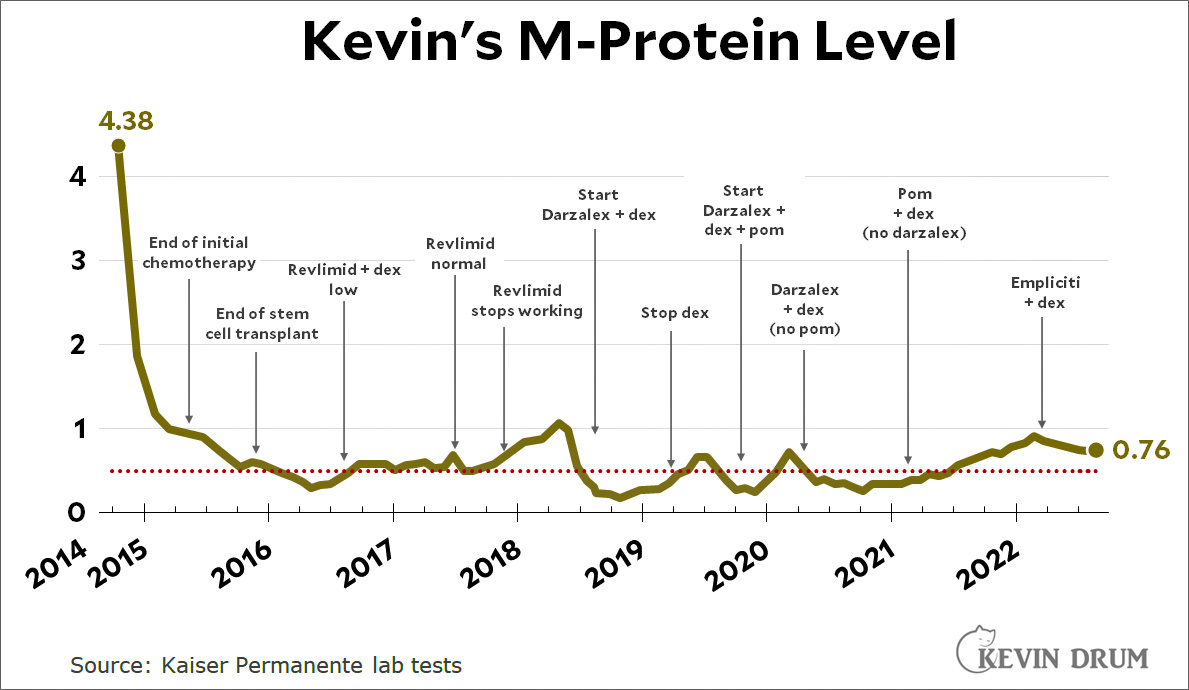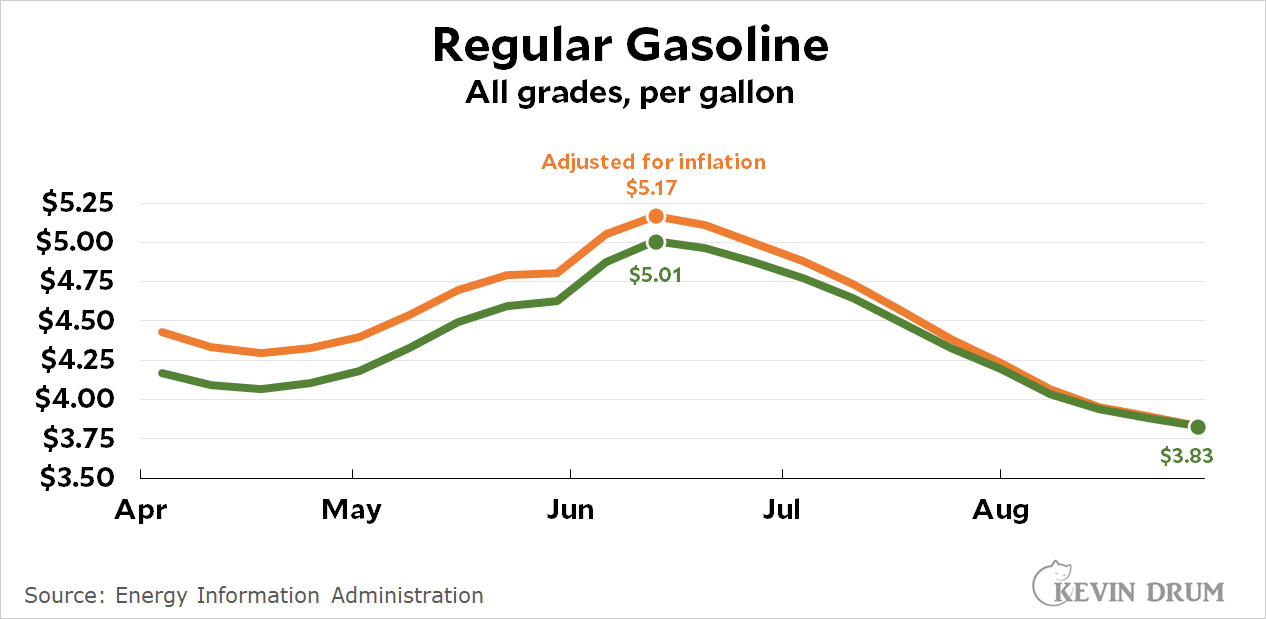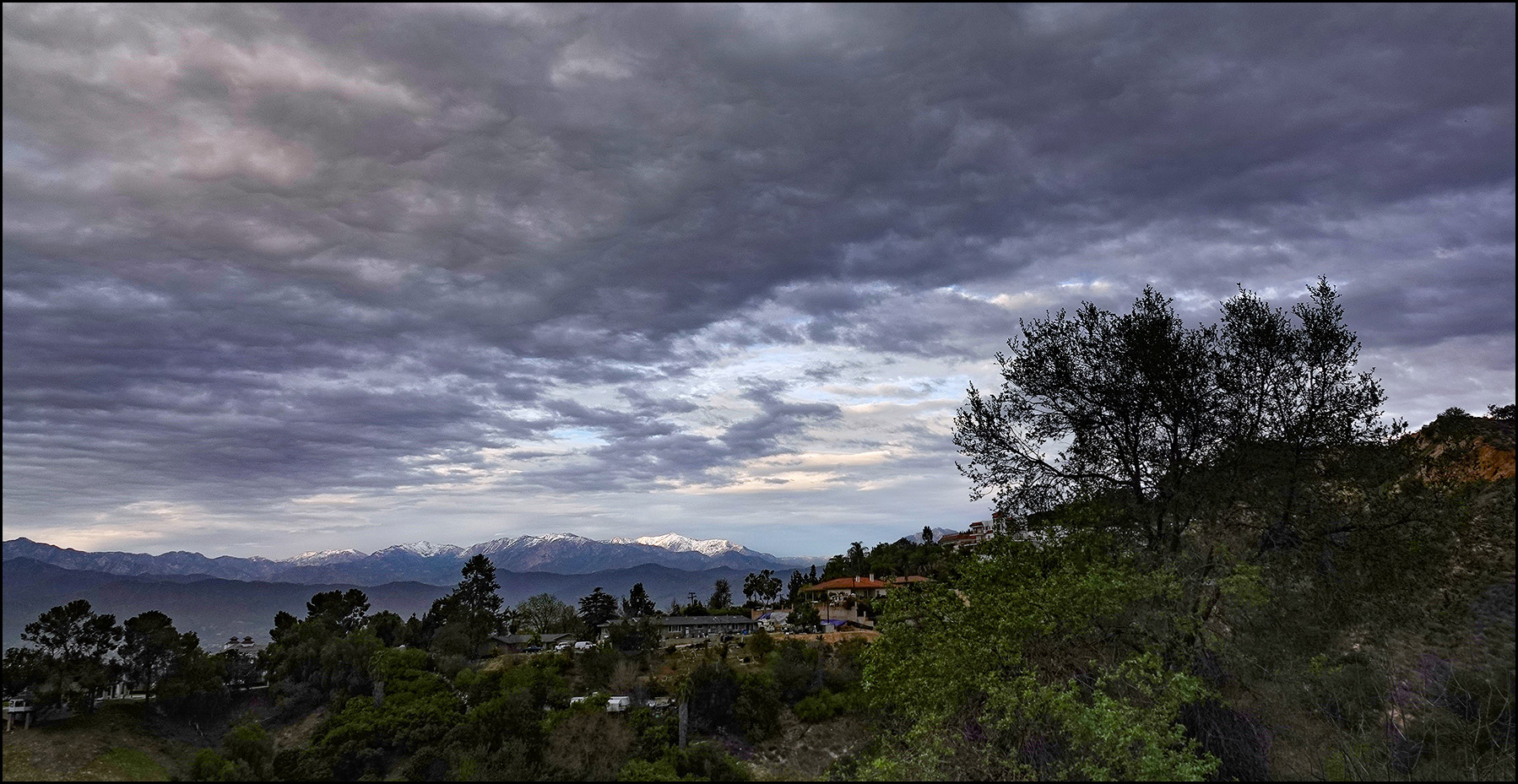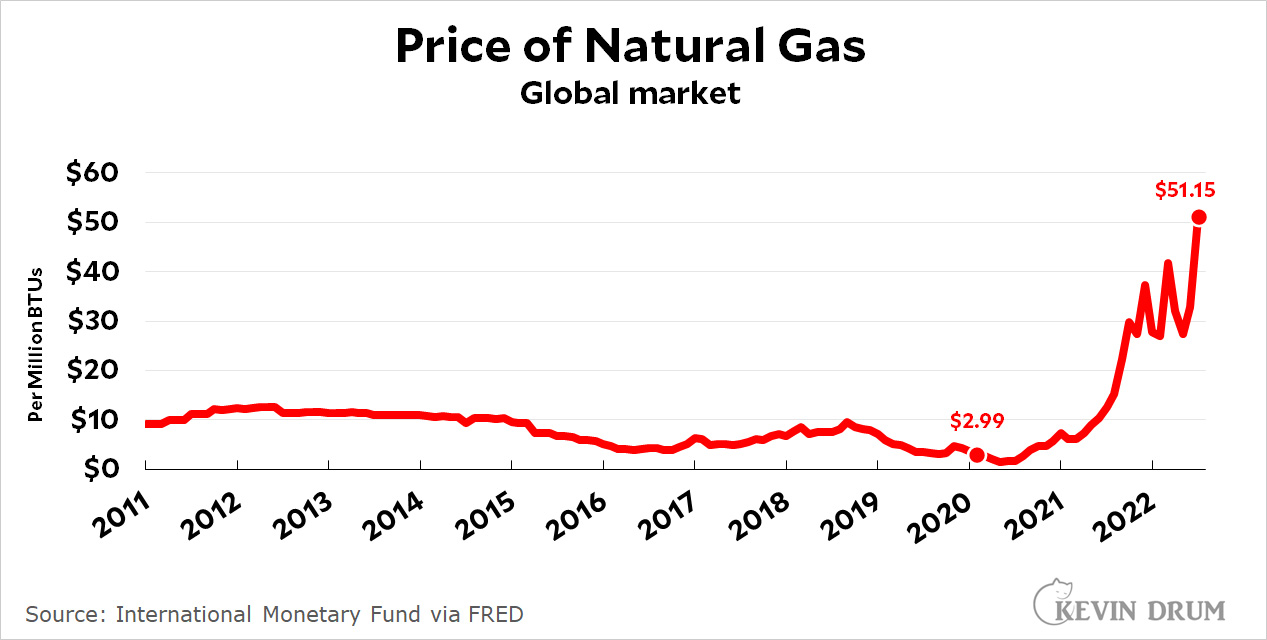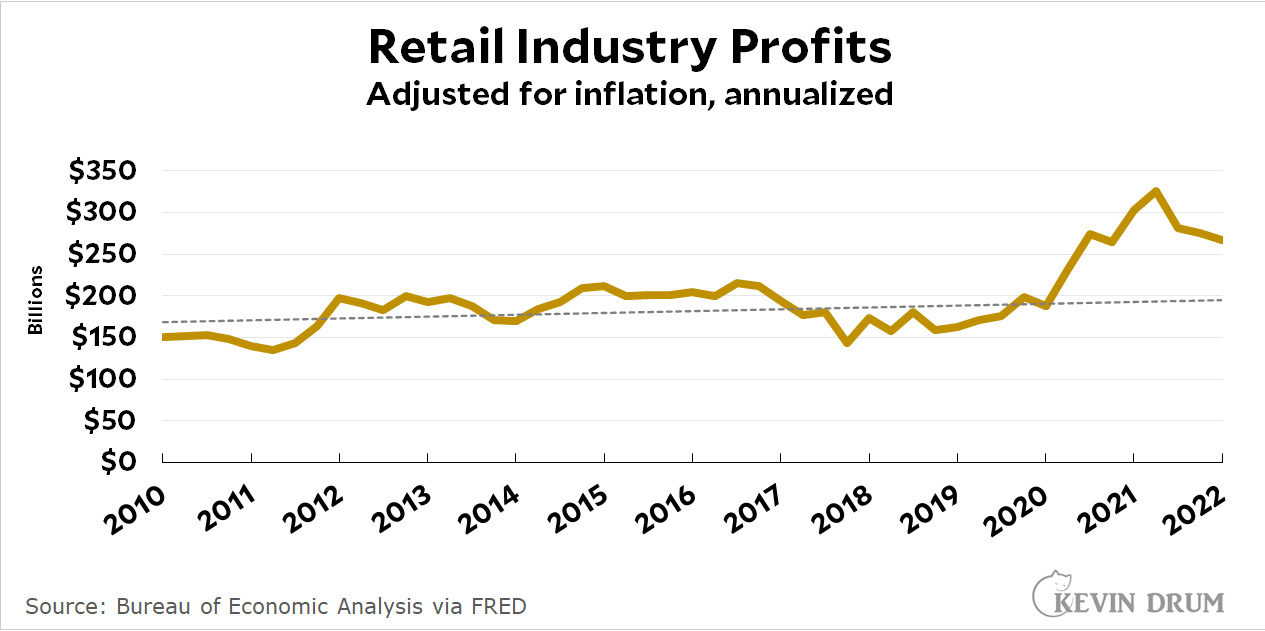Unemployment has plummeted everywhere:
Unemployment rates were lower in July than a year earlier in 383 of the 389 metropolitan areas, higher in 5 areas, and unchanged in 1 area, the U.S. Bureau of Labor Statistics reported today.
Well, almost everywhere. So who are the five unlucky areas that managed to beat the odds and show an increase in unemployment?
- Yuma, AZ
- Bloomington, IN
- Elkhart-Goshen, IN
- Columbus, IN
- Lafayette-West Lafayette, IN
Yuma is the true outlier here, rising 1.7 percentage points from 16.6% to 18.4%. What the hell is going on out there?
The other four cities are all in Indiana. Their joblessness increases were small, but still, aside from our friends in Arizona no other state had even one area with increased unemployment. What the hell is going on out there?¹
As for the other 48 states, good job. Unemployment is down in every single area. My own metropolitan division, Anaheim-Santa Ana-Irvine, dropped a stunning 3.6 points from 6.4% to 2.8%. Hooray for us.
¹Indiana as a whole managed to eke out a 0.2% decrease in unemployment. This was the worst performance in the nation. The best performance was turned in by California, which had a 3.9% drop in unemployment. You can check out your neck of the woods here.

